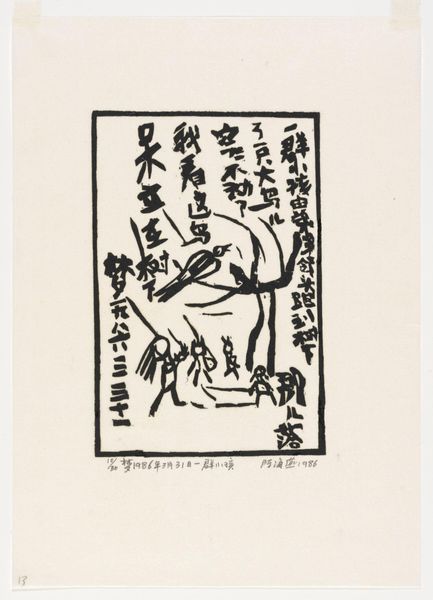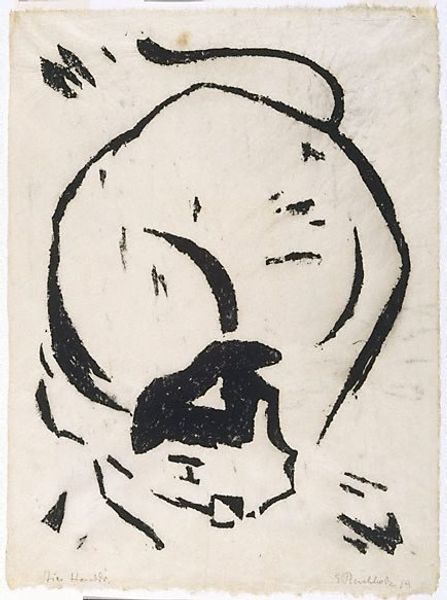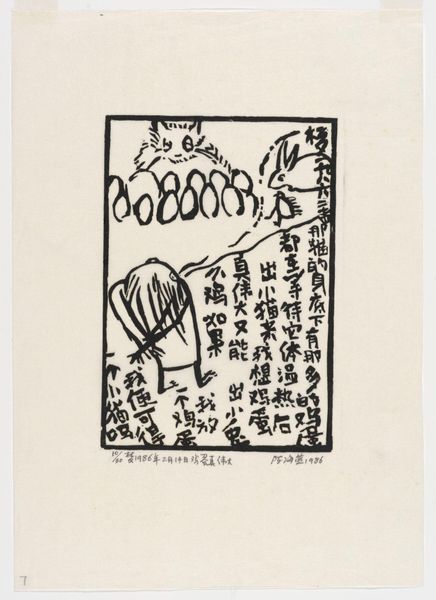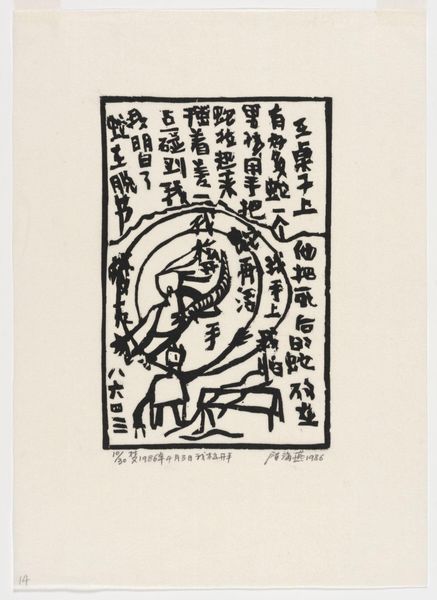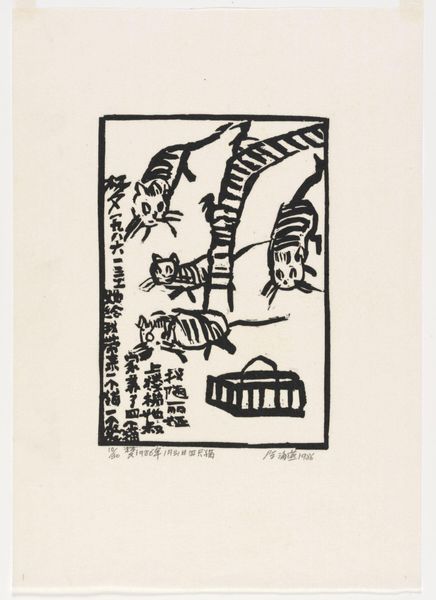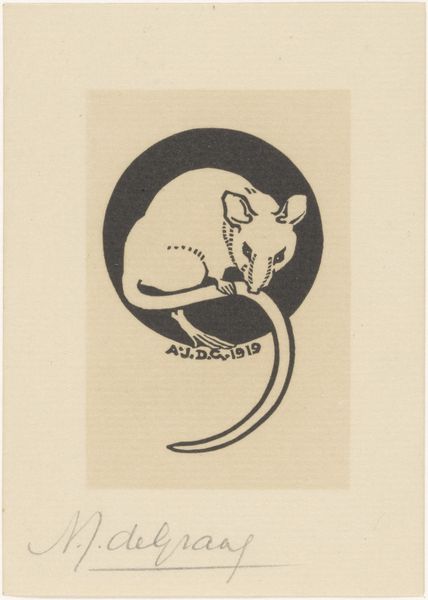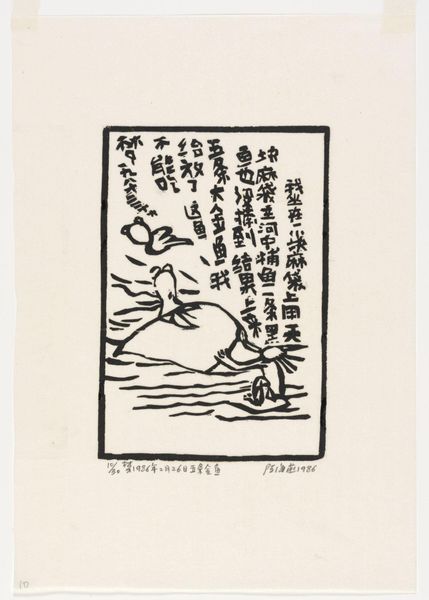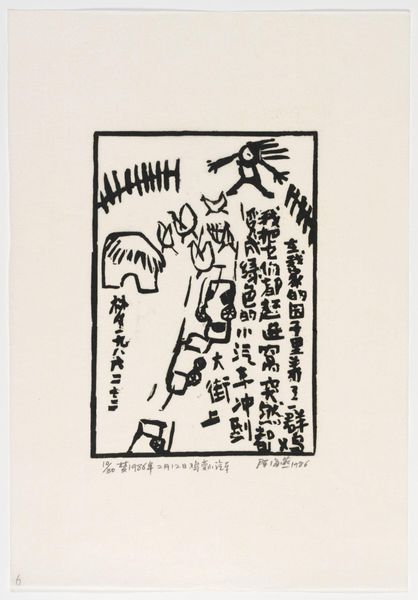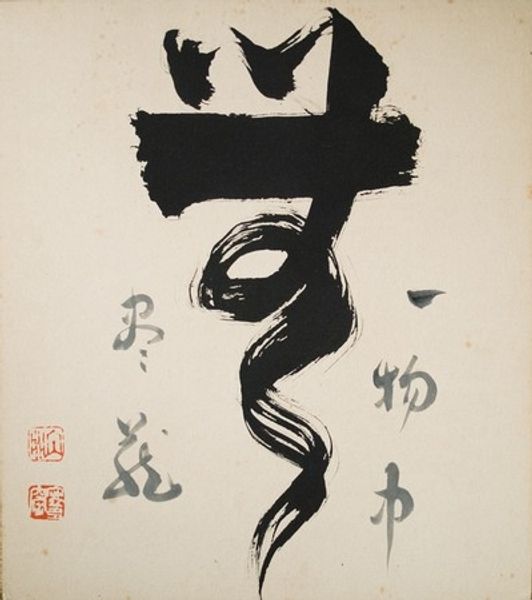
Copyright: Unichi Hiratsuka,Fair Use
Curator: This is "Woman from Behind," a woodblock print created in 1950 by Unichi Hiratsuka. It exemplifies the Ukiyo-e tradition, while presenting a modern perspective on figuration. What’s your first reaction to it? Editor: Intriguing! It feels bold and graphic. The stark black against the paper creates an interesting silhouette. Almost like a shadow, really focusing my gaze on what's obscured: identity, agency. Curator: Precisely. Considering the post-war period, prints like these became more accessible. They represent a democratization of art, using readily available materials to engage a wider audience than traditional painting would allow. Editor: You can see the artist using the constraints of the woodblock to their advantage, actually. The negative space becomes just as important as the carved elements, implying texture and form with a minimal number of lines. But think about it—is this merely about accessibility, or also a subtle critique of societal expectations of women? Curator: Good point! The title invites us to ponder the perspective, suggesting a distance, both literal and metaphorical, from the subject's inner life. Editor: Definitely, we have this obscured view, preventing our ability to identify or understand her beyond external appearances, but in light of Hiratsuka being at the forefront of the Sosaku-hanga movement – literally "creative print movement"- maybe he is trying to challenge existing woodblock traditions. Curator: A valid assertion! We see a fusion here—traditional Ukiyo-e themes filtered through the lens of modern artistic practice where individual expression takes precedence. Hiratsuka clearly engages with familiar subject matter to push the very boundaries of his medium. Editor: Right, it's not just *what* is represented, but *how*. Considering the limited material, he uses only this striking monochromatic palette. Curator: So it appears. Each incision leaves an expressive trace on paper, revealing Hiratsuka’s hand in the printmaking process, giving presence to something seemingly absent. Editor: Yes, through materiality and focused reduction the work invites critical inquiry, while alluding to both presence and absence, silence, and the complex layers of history and identity imbued into artistic interpretation. Curator: I concur. There's so much encoded within that initial simplicity; it demonstrates how closely process and artistic vision align.
Comments
No comments
Be the first to comment and join the conversation on the ultimate creative platform.
